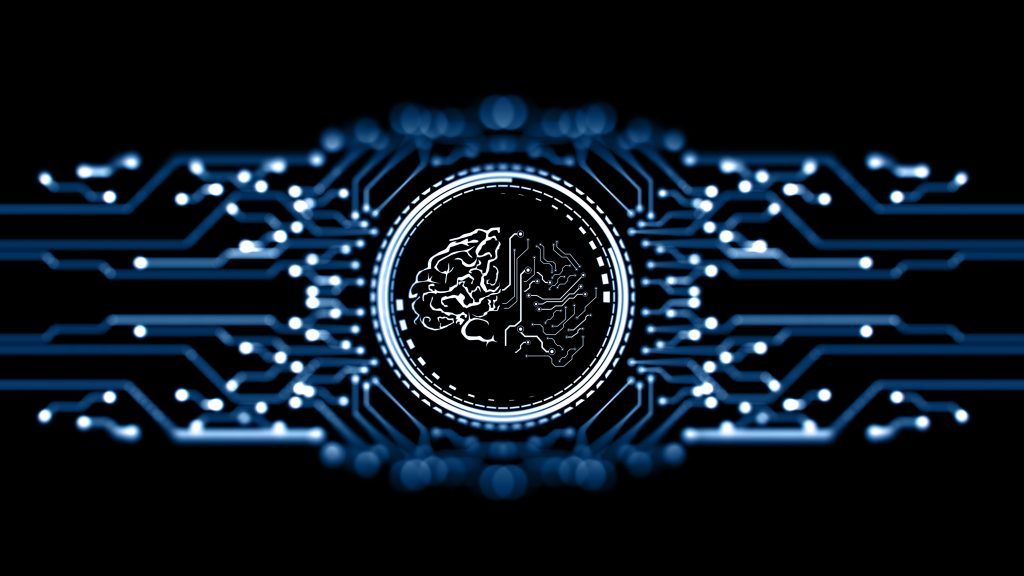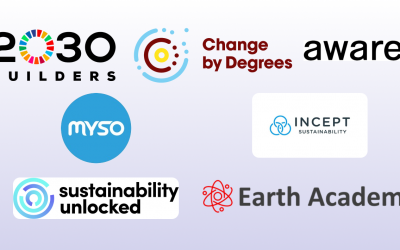In today’s rapidly evolving technological landscape, Artificial Intelligence (AI) stands out as the hottest topic of the moment. AI is a swiftly advancing technology reshaping numerous industries, and sustainability is no exception. With its potential to enhance efficiency, minimize waste, and foster innovation, AI emerges as a pivotal tool in addressing environmental challenges and steering us toward a sustainable future, making it a key player in AI for Environmental Sustainability. However, we must also be mindful of the potential risks and challenges associated with AI and ensure that it is used in a responsible and ethical manner

8 benefits of AI for Environmental Sustainability
Energy Efficiency
AI can help improve energy efficiency in buildings and industries by predicting energy usage patterns and optimizing energy consumption. It can also identify areas of energy waste and suggest ways to reduce it.
For example, Google’s DeepMind has used AI to optimize the cooling systems in its data centers, reducing energy consumption and carbon emissions.
Tesla uses AI-driven autonomous driving features in its electric vehicles to optimize driving patterns, leading to increased energy efficiency and reduced emissions.
Renewable Energy:
AI can aid in the development of renewable energy sources such as wind and solar power by predicting energy output, optimizing performance, and improving maintenance.
GE Renewable Energy uses AI in its wind turbines to enhance their performance. These turbines are equipped with sensors and AI algorithms that can predict changes in wind conditions and adjust the turbine’s operation accordingly. This predictive capability helps optimize energy output and ensures that the turbines operate at maximum efficiency. Additionally, AI-driven maintenance scheduling is used to proactively identify and address issues, reducing downtime and maintenance costs. This application of AI contributes to the growth and efficiency of renewable energy sources like wind power.
Smart Grids:
AI can help create smarter energy grids by analyzing data from sensors, meters, and other devices. This can help utilities better manage the supply and demand of electricity, reduce energy waste, and improve reliability.
Microsoft has been using AI to improve energy efficiency in its data centers and has set ambitious sustainability goals, aiming to be carbon negative by 2030.
Sustainable Agriculture:
AI can aid in sustainable agriculture practices by analyzing soil data, predicting crop yields, and identifying pest and disease outbreaks. This can help farmers optimize their crop production while reducing the use of pesticides and fertilizers.
Farm wise utilizes AI-powered robots to precisely identify and remove weeds in agricultural fields, reducing the need for chemical herbicides and promoting sustainable farming practices.
Waste Management:
AI can help improve waste management by analyzing data on waste production, collection, and disposal. This can help cities and municipalities optimize their waste management systems, reduce waste, and increase recycling rates.
Waste Robotics employs AI-powered robots to sort and separate recyclable materials from waste streams, improving recycling efficiency and reducing landfill waste.
Water Management:
AI can aid in water management by studying data on water usage, quality, and availability. This can help cities and municipalities better manage their water resources, reduce water waste, and improve water quality.
Ocean Cleanup, for instance, deploys AI-powered systems to track and collect plastic waste in the ocean, contributing to efforts to clean up marine environments.
Climate Change:
AI can help address climate change by examining data on greenhouse gas emissions, weather patterns, and other environmental factors. This can help inform policies and strategies for reducing emissions and mitigating the impacts of climate change.
In various applications, including weather forecasting and climate modeling, the understanding and prediction of weather patterns and climate change impacts are aided by IBM’s Watson.
Biodiversity Conservation:
AI can aid in biodiversity conservation by investigating data on species populations, habitats, and threats. This can help inform conservation strategies and improve our understanding of the complex relationships between different species and their environments. Conservation International uses AI for Environmental Sustainability, employing advanced algorithms to analyze biodiversity data and track changes in ecosystems. This technology plays a crucial role in the conservation and protection of critical natural habitats.
Sustainable Development Goals and AI
AI can play a significant role in achieving the Sustainable Development Goals (SDGs) adopted by the United Nations in 2015. The SDGs aim to end poverty, protect the planet, and ensure prosperity for all. AI can help achieve these goals by improving efficiency, reducing waste, and promoting innovation in various sectors. For example, AI can help improve access to healthcare and education, reduce poverty, and promote economic growth. It can also aid in achieving environmental goals, such as reducing greenhouse gas emissions, conserving biodiversity, and promoting sustainable use of natural resources.
However, organizations must carefully manage the adoption of AI to ensure they avoid negative impacts on sustainable development. This involves ensuring ethical and responsible use of AI, protecting privacy and security, and extending benefits to everyone, including marginalized communities.

Eight Sustainability Risks Posed by AI
- Energy consumption:
AI systems demand substantial energy for operation and model training, contributing to greenhouse gas emissions. As AI usage expands, it’s crucial to prevent increased energy consumption and emissions. Balancing AI growth with environmental sustainability is paramount.
- E-waste:
The development and use of AI technologies can contribute to electronic waste, which can have harmful environmental impacts. To minimize e-waste, it is crucial to design AI hardware and components for durability, repairability, and recycling.
- Bias and discrimination:
AI systems can perpetuate bias and discrimination if they are trained on biased or incomplete data. This can have negative social and environmental impacts by perpetuating inequalities and contributing to environmental injustice.
- Privacy and security:
AI systems often rely on personal data, and if not appropriately protected, this can compromise individuals’ privacy and security. This can have negative impacts on social and environmental well-being.
- Job displacement:
The use of AI technologies can lead to job displacement, particularly in industries such as manufacturing and transportation. This can have negative social and economic impacts, particularly in communities that rely on these industries.
- Dependence on technology:
As the use of AI continues to grow, there is a risk of becoming overly dependent on technology. By reducing human interaction with the natural environment and contributing to social isolation, AI may hinder our ability to create sustainable and inclusive communities.
Conclusions
To address these risks, it is essential that we develop and use AI technologies responsibly, with a focus on sustainability, equity, and social and environmental well-being. To achieve this goal, it is important to invest in research and development to minimize the environmental impact of AI. Additionally, the design of AI systems should prioritize diversity and inclusion, ensuring accessibility to all users, regardless of their background or abilities. Privacy and security must also be safeguarded to uphold public trust in AI systems.
Implementing effective measures requires organizations to ensure decision-makers understand AI’s risks and benefits in sustainability strategies. This awareness extension should reach all levels, involving managers and employees who play a pivotal role in integrating sustainability into daily operations. By providing training to enhance awareness of sustainability issues, organizations can cultivate a culture centered on responsible AI use. This culture, with its focus on responsibility and sustainability, brings advantages not only to the company but also to society at large.
Ultimately, real people who prioritize sustainability and social responsibility must guide the powerful tool that is AI. By integrating these values into the development and use of AI technologies, we can ensure that they contribute to a more sustainable and equitable future for all.
Discover proven strategies to boost your organization’s sustainability efforts. Download our free e-book on employee engagement and start transforming your team today!




0 Comments